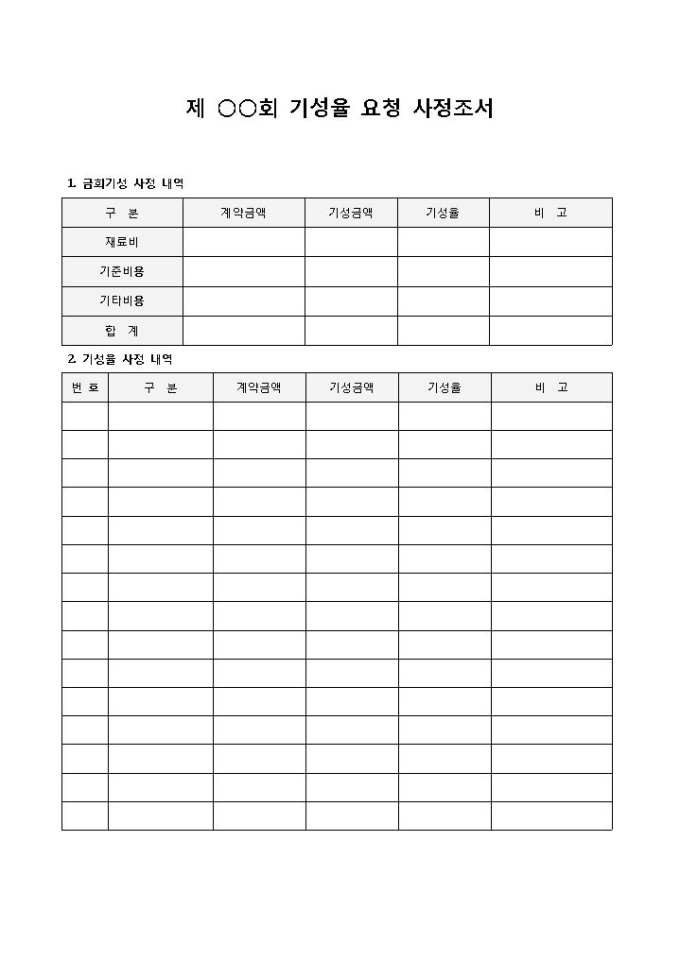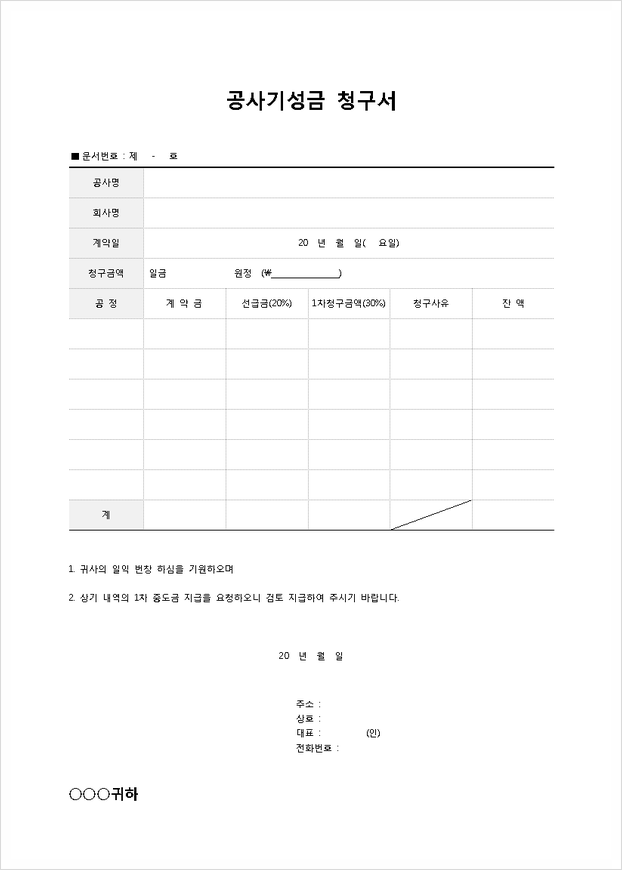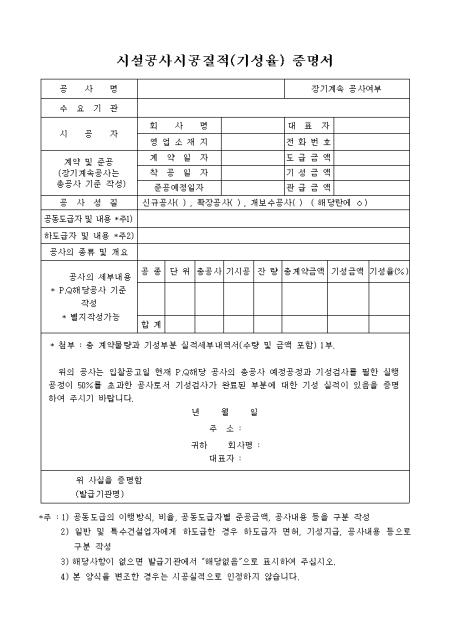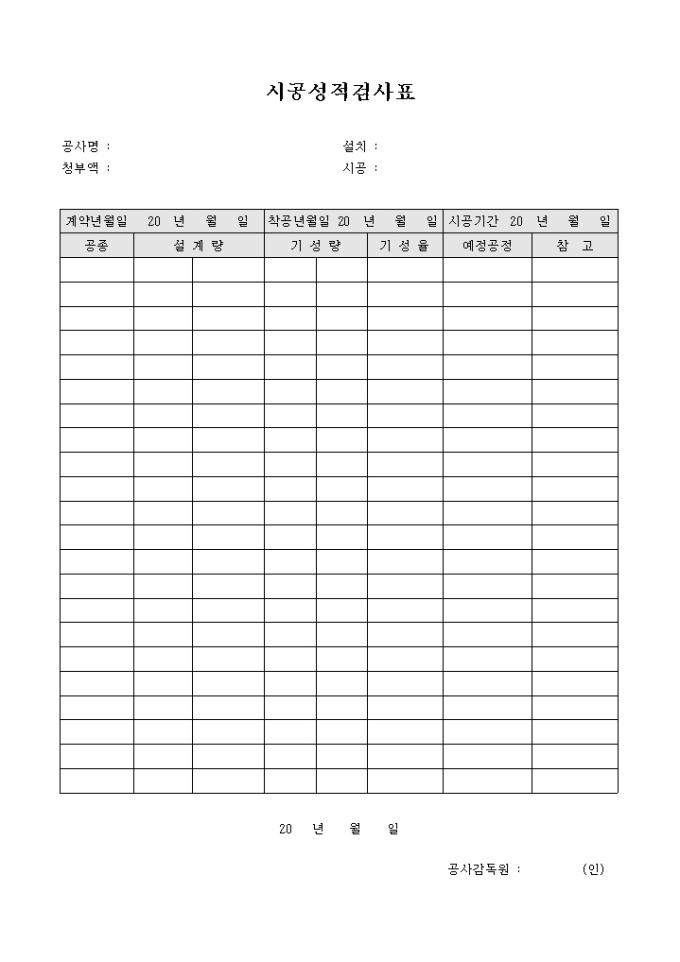기성율
기성율은 기존에 해당 조직에서 근무하면서, 퇴직은 아니지만 일정 연차가 쌓이면 현재 근무하는 인원 중에서 어느 정도의 비율을 차지하고 있는지를 나타내는 지표이다. 다시 말해, 기성율이 높다는 것은 해당 조직 내에서 일정 연차 이상 근무하고 있는 인원들이 많다는 것을 의미한다.
기성율 측정 방법
기성율을 측정하는 방법은 간단하다. 기성율을 알고자 하는 조직에서는 인력관리시스템에 등록된 직원들의 연차 정보를 바탕으로 기성율을 계산한다. 일반적으로는 연차 10년 이상부터 기성으로 간주하고 계산한다.
기성율 측정 시 유의사항
기성율을 측정할 때에는 주의해야 할 사항도 있다. 예를 들어, 한 회사에서는 사실상 퇴직자 처리를 하지 않고 일정 연차 이상 근무하면 기성율에 편성하는 경우가 많다. 이 경우에는 기성율이 높아지기는 하지만, 사실상 전문성이 부족한 인원들이 적극적으로 일을 처리하게 된다는 문제점도 있다.
또 다른 유의사항은 경력직이나 인사담당자의 경우에는 기성율 계산이나 관리를 위해 세부적인 정보들을 파악하고 철저하게 관리하고 있어야 한다. 예를 들어, 직급이나 직무에 따라서 기성율이 다르게 적용되어야 하는 경우도 있다.
기성율이 영향을 미치는 요소
기성율은 일반적으로 조직 내에서의 경력, 전문성, 그리고 조직 문화 등에 영향을 받으면서 나타나게 된다. 따라서, 기성율이 높을수록 해당 조직에서는 많은 경력과 전문성을 가진 인력들이 일하고 있다는 것을 의미하기도 한다.
특히, 고객에게 유용한 업무를 수행하기 위해 필요한 전문성이나 긴 시간동안 모은 경험 등의 요소가 중요한 조직이라면, 기성율이 높으면 일반적으로 유리하다고 할 수 있다.
기성율과 인재 채용의 관계
기성율과 인재 채용의 관계에서는 두 가지 측면에서 이야기할 수 있다. 하나는 인재 채용 계획에 대한 것이고, 다른 하나는 인재 채용 과정에서 기성율의 역할에 대한 것이다.
인재 채용 계획을 세울 때 기성율이 높은 조직인 경우에는 경력 및 전문성을 갖춘 인사를 구하는 것이 용이하다. 또한, 기성율이 높은 조직은 이미 많은 경력과 전문성을 갖춘 인력들이 조직 내에서 일하고 있으므로 새로 들어온 인원의 역할 및 지위를 선정하기 쉽다.
인재 채용 과정에서는 기성율이 재직자와 동등한 역할을 하는 경우도 있다. 즉, 모든 단계에서 기성율이 측정되어 인사담당자의 결정에 영향을 미치기도 한다. 이 때, 기성율을 높이기 위해서 다른 지표들보다는 일정 연차 이상 근무하는 인원들에게 우대하는 경우가 많으며, 이러한 경우 인사 결정에 있어서는 조심해야 하는 것이다.
기성율 향상을 위한 교육과 훈련 방법
기성율은 단순히 경력에 따른 지표이기 때문에 꼭 조직 문화나 업무 특성에 맞춰 고민해야 한다. 하지만, 제대로 된 교육과 훈련을 통해 기성율을 향상시킬 수도 있다.
예를 들어, 일부 조직에서는 중요한 프로젝트를 수행할 때, 경력이 적은 직원들에게 기회를 제공하고 그들의 경력을 쌓도록 하는 경우도 있다. 이러한 방식으로 훈련과 교육을 받으면 어느 정도 경력이 쌓인 직원들이 기성적인 역할을 수행하게 될 것이다.
기성율과 조직 내 역할 수행의 관계
기성율과 조직 내 역할 수행의 관계는 상당히 복잡하다. 일반적으로, 기성율이 높은 조직은 선배가 주도하는 조직 문화가 나타나고, 기성율이 낮은 조직일수록 새로운 아이디어가 긍정적으로 수용되는 조직문화가 특징이다.
하지만, 이러한 전략적인 관계보다 개인의 역할 수행과의 관계가 더 중요하다. 기성율이 높은 조직의 경우, 일반적으로 경력이 쌓이면서 좀 더 경험적이면서도 자신감 있는 사람들이 많으므로 이에 압도된 경우 개인의 역할 수행에 있어서 의구심을 가지게 될 수도 있다. 이것은 흔히 밀실에서 이루어지는 오피스 정치에서도 비롯될 수 있으므로, 관리자는 이러한 문제를 고려해 개인의 역할 수행을 적극적으로 지원해야 한다.
기성율과 경험의 중요성
기성율은 경력의 쌓임과 관련이 있기 때문에, 일반적으로 경험의 중요성에 대한 직간접적인 반영체계이기도 하다. 따라서, 기성율이 높은 조직에 있어서는 경력이 중요하다는 것을 강조하고, 이러한 경력을 바탕으로 책임감있고 효율적인 업무를 수행할 수 있는 인력을 유치하는 것이 필수적이다.
한편, 기성율이 낮은 조직에서는 경력보다는 창의성과 즉각적인 문제 해결 능력에 대한 강조가 높다. 이런경우 인사관리자가 조직과 인부의 요구를 적절히대응하는 방식으로 경력보다는 새로운 아이디어와 창신력을 가진 인력을 채용해야 한다.
기성율 관리의 필요성
기성율 측정 및 관리는 조직에서 핵심적인 역할을 수행 할 수 있다. 먼저, 기성율이 낮은 조직에서는 모든 인원들이 일정 경력을 쌓도록 적극적으로 지원해야 한다. 이에 필요한 교육과 훈련을 제공하고 적극적인 피드백을 통해 역량을 키울 수 있도록 해야 한다.
또한, 기성율이 높은 조직에서는 기성율에 맞추어 적극적인 역할 분담을 지원하는 것이 중요하다. 기성 유도 신진과 확실히 연계하면서 맡은 일과 강의를 통해 더 나은 성과를 창출할 수 있도록 지원해야 한다.
FAQs
Q: 기성율이 낮으면 무조건 안 좋은건가요?
A: 기성율이 낮은 조직에서는 창의성과 즉각적인 문제 해결 능력에 대한 강조가 높다. 따라서, 기성율이 낮다고 해서 무조건 안 좋은 것은 아니다. 그러나 경력이 부족한 직원들의 경우 적극적인 지원을 통해 경력을 쌓을 수 있도록 노력하는 것이 바람직하다.
Q: 다른 조직의 기성율과 비교하면 어떨까요?
A: 다른 조직의 기성율과 직접적으로 비교하는 것은 어렵다. 기성율은 조직의 특성, 문화, 업무 특성 등에 영향을 받기 때문이다. 따라서, 다른 조직의 기성율과 비교하기 보다는 자신의 조직에서 기성율이 몇 퍼센트인지에 집중하는 것이 좋다.
Q: 조직 내에서 기성율이 높은 사람이 모든 결정을 하는 건가요?
A: 조직 내에서 기성율이 높다고 해서 모든 결정을 하는 것은 아니다. 기성율이 높은 사람과 낮은 사람이 함께 일하면서 서로 지식과 경험을 공유하며 더 나은 결정을 내릴 수 있다.
Q: 기성율이 높은 조직은 모두가 만족하는 건가요?
A: 기성율이 높은 조직에서도 모두가 만족하는 것은 아니다. 그러나 기성율이 높은 조직이라면 특별한 조건이 없는 한, 전체적으로 안정적인 인력을 유지할 수 있는 장점이 있다.
Q: 기성율이 높으면 직원들은 어떤 장점을 누릴 수 있나요?
A: 기성율이 높은 조직에서는 경력을 쌓아 직원 본인과 조직에 양호한 평가를 받을 수 있기 때문에 경력과 전문성을 갖춘 인력들이 적극적으로 일하고 있다는 것을 의미한다. 이에 따라, 이러한 인력들은 조직 내에서 적극적으로 계열성을 드러내며 더 나은 일을 수행할 수 있으며 지리적인 이동 등에서도 우월한 위치를 차지할 수 있다.
Q: 기성율을 높이기 위해서 어떤 노력이 필요한가요?
A: 기성율을 높이기 위해서는 경력과 전문성을 쌓을 수 있도록 교육과 훈련에 적극적으로 참여해야 한다. 또한, 본인의 직무와 조직 내 역할을 수행하는 것에 대한 관심도를 높이고 프로젝트나 아이디어 등에 적극적으로 참여하는 것이 중요하다.
사용자가 검색한 키워드: 기성율 기성 뜻, 기성고, 기성고율, 공무 기성, 공사 공정률 계산, 기성금 계산
Categories: Top 70 기성율
(하율&예율&성율)7전8기성율♡ 뒤집기마스터
여기에서 자세히 보기: future-user.com
기성 뜻
In Korea, the use of words and expressions is heavily influenced by context and social norms. A word or phrase may carry different meanings depending on the situation and the relationship between the speaker and the listener. Therefore, understanding the 기성 뜻 of a word is crucial for effective communication in Korean.
Understanding 기성 뜻
With the advancement of technology, it has become much easier for people from different cultures to communicate with each other. However, language barriers still exist, and misunderstanding or misinterpretation of words can occur even among native speakers of the same language.
This is especially true for Korean, a language that has evolved in a unique cultural context. Terms and expressions may have different meanings and nuances depending on who is using them and in what context they are used.
기성 뜻 refers to the pre-established meaning that a word or expression has within a particular community or culture. This meaning is not necessarily the dictionary definition but rather the interpretation that is commonly understood and used by native speakers of the language.
For example, the word “집” which translates to “house” in English has a 기성 뜻 of not only a physical dwelling place but also includes the sense of family and community. Therefore, when a Korean person talks about their 집, they may be referring to not only the physical dwelling place but also the sense of belonging and connections that come with it.
Another example is the expression “간지나다” which literally means “to be in style”. However, in Korean culture, it also has the connotation of elegance, sophistication, and a sense of refinement.
The importance of 기성 뜻
In Korean culture, the use of language is highly regarded, and proper use of words and expressions is a sign of respect and social intelligence. To communicate effectively, it is essential to understand the 기성 뜻 of words and expressions to avoid misunderstandings or misinterpretations.
Misunderstanding and misuse of words can result in awkward social situations, offensive comments, or even legal issues. For example, using a word with a different 기성 뜻 in a formal setting can result in confusion or embarrassment.
Furthermore, understanding 기성 뜻 can also assist in building relationships and connections with people. Demonstrating an understanding of the meanings and nuances of words and expressions can show that an individual has respect for the culture and its values.
FAQs
Q: Can words and expressions have multiple 기성 뜻?
Yes, words and expressions can have multiple 기성 뜻 depending on the context and the perspective of the person using them. For example, the word “산” can mean “mountain”, “profit”, or “to be born” depending on the context.
Q: How can I improve my understanding of 기성 뜻?
One of the best ways to improve your understanding of 기성 뜻 is to immerse yourself in the Korean language and culture. Reading books, watching TV shows and movies, and engaging with native speakers can help you gain a deeper understanding of the language and its context. Using a good Korean dictionary or language learning app can also assist you in learning new words and expressions.
Q: Is it possible for foreigners to fully understand 기성 뜻?
While it may be challenging for non-native speakers to fully grasp the nuances and cultural context of Korean words and expressions, it is still important to strive for an understanding of 기성 뜻 to effectively communicate with native speakers. Continuous learning and immersion in the language and culture can help foreigners improve their understanding and use of the language over time.
In conclusion, understanding 기성 뜻 is essential for effective communication in Korean language and culture. It involves the shared interpretation and understanding of words and expressions within a particular community or culture. Misunderstanding or misuse of words and expressions can result in confusion or offense in communication. Through continuous learning and immersion, foreigners can improve their understanding of 기성 뜻 and effectively communicate with native speakers of the Korean language.
기성고
기성고의 역사
기성고는 중국에서 매우 중요한 단어입니다. 그것은 유래적으로 진(秦) 나라 시대 초에 황제의 명령으로 만들어졌습니다. 이전에는 분산되어 있던 문법, 표현 방법, 언어 명확성 등과 같은 요소를 표준어로 통일하려는 노력이 시작되었습니다. 교류를 도모하고 국내 언어의 발전을 촉진하여 광대한 학문계를 이끌 수 있게 된 것입니다.
기성고는 전통적으로 중국어로 쓰여지지만, 인근 국가에서도 대부분의 고전 문학이나 교과서에서 사용되는 단어입니다. 일본, 베트남, 대만, 싱가포르 등 다른 문명권에서도 교육적인 목적으로 기성고를 사용합니다.
기성고의 용도
기성고는 일반적으로 오래된 책이나 문서, 논문, 노래 등에서 자주 사용됩니다. 이것은 중요한 개념이나 아이디어가 다양한 문서에서 사용됩니다. 또한 기성고는 같은 의미를 가진 다른 단어보다 더 정확하고 명확하기 때문에 자신의 문장이 더 강력하게 들리게 합니다.
기성고는 상황과 방언 또는 지역적인 언어적 특성에 기인한 사소한 차이점을 피하기 위해서도 자주 사용됩니다. 이 표준화 역시 효율적인 개념 전달을 위한 중요한 도구입니다. 따라서 기성고를 사용함으로써 동일한 내용을 구성했는데도 서로 다른 방식으로 표현하던 소통장애를 방지할 수있습니다.
최근의 기성고
현재 중국 정부는 기성고 강화 프로그램을 시작하여 기존의 기독교 천주교와 같이 특정 종교 그룹이 만든 다른 교정의 서적을 금지하고 대체하는 기성고 제안을 적극적으로 추진하고 있습니다.
2008년 베이징 올림픽 이전에 기성고 운동이 시작되어 중국 모든 구역에서 구어와 문교 중에서 표준 중국어를 추진하는 프로그램이 구체적으로 실행되었습니다. 이때는 중국 공용어와 국제의 경쟁력을 높이기 위해서였습니다.
FAQs
Q: 기성고란 무엇인가요?
A: 기성고는 이미 만들어진 기존의 것을 의미하는 중국어 문화어입니다.
Q: 왜 기성고가 중요한가요?
A: 기성고는 역사와 문화, 국가 통일, 학문 등의 분야에서 중요합니다. 표준 중국어와 같은 표준화 노력의 핵심입니다.
Q: 기성고는 어떻게 구성되어 있나요?
A: 기성고는 많은 세부 범주로 구성됩니다. 예를 들어 말과 문장 구조, 문법, 발음 등과 같은 것입니다.
Q: 기성고의 역사는 언제부터 시작되었나요?
A: 진 나라 시대 초기에 황제의 명령으로 제작되었습니다. 그 후 국가적인 표준화 노력과 함께 필수적인 요소가 되었습니다.
Q: 기성고는 어디에서 사용되나요?
A: 기성고는 대부분의 고전 문학이나 교과서에서 적극적으로 사용됩니다. 또한 일반적으로 문서, 논문, 노래 등의 작업에 사용됩니다.
기성고율
What is 기성고율?
기성고율 is the Korean term that translates to “accumulated annual leave.” Korean labor laws mandate that employers give their employees paid vacation time each year, based on the number of years they have worked for that company. This leave is accumulated on an annual basis, with unused leave carrying over from one year to the next for a certain period of time. Essentially, 기성고율 refers to the amount of vacation time an employee has accrued and is entitled to take.
How does 기성고율 work?
In Korea, employees are entitled to at least 15 days of paid leave per year, regardless of their experience or job status. However, the number of days off increases the longer an employee works for a company. For example, after one year of employment, an employee is entitled to 15 days of paid leave, but after two years, they are entitled to 16 days, and the number increases by one day for each additional year of employment up to 25 days. After 25 years of employment, an employee is entitled to 30 days of paid leave.
Unused leave can be carried over to the following year, but there are restrictions. For most industries, employees must use their accumulated leave within a year. However, certain industries, such as construction and transportation, may allow employees to carry over their leave for up to three years.
Employers are required by law to encourage their employees to use their accumulated leave, as in some cases, employees may not use their entire leave entitlement, which can lead to burnout and reduced productivity. The length of the vacation period and the timing of the leave are generally negotiated between the employee and the employer. However, in many cases, the employer may have significant influence over the timing of the leave, particularly in cases where there is a need for staff coverage.
Why is 기성고율 important?
기성고율 is important for a few reasons. Firstly, it ensures that employees can have a break from work and take care of themselves and their families. In many countries, it is not guaranteed that employees receive paid leave, so having a system in place where employees have a certain number of days off each year is crucial for their well-being.
Additionally, having a system in place where unused leave can be carried forward ensures that employees can take longer vacations, which is particularly important for employees who may want to travel overseas or have time to spend with their families. It also ensures that holidays, which can often be a busy time for businesses, are staggered among the workforce, so there is always adequate coverage for those who are required to work during that time.
Furthermore, the system ensures that employees are not overworked and are not at risk of burnout. Allowing employees to take adequate time off ensures that they can focus and be productive when they return to work. This, in turn, leads to a healthier workplace atmosphere and contributes to a better work-life balance for employees.
FAQs:
Q: Do all Korean workers receive ki-sung go-yul?
A: Yes, all workers in Korea are entitled to ki-sung go-yul, regardless of their job or experience.
Q: What happens if a worker does not use all their ki-sung go-yul in a year?
A: Unused ki-sung go-yul can generally be carried over to the following year, but there are restrictions. In most cases, employees must use their accumulated leave within a year. However, certain industries, such as construction and transportation, may allow employees to carry over their leave for up to three years.
Q: Can the employer choose when an employee takes their ki-sung go-yul?
A: The timing of the leave is generally negotiated between the employee and the employer. However, in many cases, the employer may have significant influence over the timing of the leave, particularly in cases where there is a need for staff coverage.
Q: How long is the vacation period for ki-sung go-yul?
A: The length of the vacation period is generally negotiated between the employee and the employer. For most industries, employees are entitled to at least 15 days of paid leave per year, but this increases with the number of years of employment.
Q: Is ki-sung go-yul good for the Korean economy?
A: Although ki-sung go-yul may require employers to pay for their employees’ vacations, it can have a positive impact on the Korean economy in the long run. Allowing employees to take adequate time off ensures that they can focus and be productive when they return to work. This, in turn, leads to a healthier workplace atmosphere and contributes to a better work-life balance for employees, which can lead to greater job satisfaction and lower employee turnover.
주제와 관련된 이미지 기성율

기성율 주제와 관련된 이미지 35개를 찾았습니다.









Article link: 기성율.
주제에 대해 자세히 알아보기 기성율.
- [법용어] 기성고와 기성율 – 네이버 블로그
- 기성제도 운영지침 | 국가법령정보센터 | 행정규칙
- 기성율 / 기성률 <- 뭐가 맞아? - 인스티즈
- 기성율 양식 서식.샘플 문서자료 – 예스폼
- 국토교통부_기성보고 현황 – 공공데이터포털
- #기성율포토그래퍼실장님 hashtag on Instagram • Photos and …
- 지식나눔 | 지식 – 대한건설협회
- (건설관계법규)시설공사시공질적(기성율) 증명서 – 레포트월드
더보기: future-user.com/wki